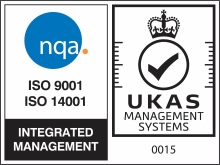The automation and evolution of manual processes
Our client manufactures precision gas sensors, and as part of the manufacturing process the sensors are undergo a 48-hour test in a heated chamber while various gases are passed through the sensors. The sensors are continually monitored during this process and the data is then used to characterise the sensor electronics and calibrate each individual sensor.
The original test system was laboratory based, using a fume cupboard, some manually operated valves and with recordings performed on a PC. Operators needed to be present at key stages to change the valve states , check temperatures and trigger data recordings.
Isolated and self-contained
Our client asked us to make a production-ready test chamber which automated the testing process.
With safety as a prime concern and as the system used hydrogen gas (H2) as one of the test gases, we developed a workbench with the upper surface as an enclosed chamber with built-in fume extraction. To minimise any risk, all electrial signals entering the chamber were kept safe using Intrinsically Safe Barriers (IS Barriers) to ensure only the required energy entered the system.










To further reduce the risk of electrical discharge, we designed a bespoke heat chamber heated by water coils with the heating system entirely outside of the enclosed chamber. Also, all valves were driven by pneumatic pressure with the solenoids and pneumatic supply kept outside the chamber and mounted beneath the workbench.
Reduction in reliance on manual process
The production system allows for 16 sensors to be processed at the same time and only requires an operator to load the chamber, select the test parameters and trigger the test, and then later unload the machine and start again.
Integration and data safety
Traceability was key to this system and so we used a handheld scanner to record the serial numbers of each sensor and its position in the chamber. All data is logged, for each sensor, into retentive Programmable Logic Controller (PLC) memory before being transferred to the client’s network via FTP. We also included in the system an Open Platform Communication - Unified Architecture (OPC-UA) interface to replace the FTP protocol with a more data secure transfer mechanism once the customers new Manufacturing Execution System (MES) system is in place.
